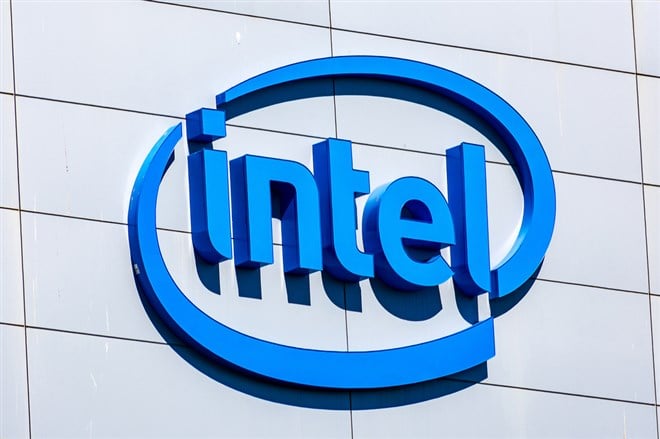
Intel Corp (NASDAQ: INTC) shares declined by 2.26% in Wednesday's session, near its daily second standard deviation decline, on the back of management announcing a dire fractioning of its seemingly steadily growing dividend.
Why is Intel pressing for a turnaround so highly focused on bringing fabs and chip manufacturing to the United States from overseas, potentially drying their free cash flows to the point that a 66% dividend cut is needed?
Historically speaking, chips and semiconductors, arguably interchangeable, have allowed the United States to be a force to reckon with, all the way from military power and technology allowing laser-guided bombs and missiles to win the nation a couple of wars, all the way to today's NFC technology - you know, the thing you use to tap your phone when paying for something. However, the industry's past and present haven't always been this rosy.
Intel had revolutionized the chip industry by creating the microprocessor, the x86 architecture and the Pentium processor, which were pretty much embedded in all of the consumer electronics we grew up with - save for the iPhone, they couldn't quite land that deal -. However, many believe Intel's competitive advantage has deteriorated to mediocrity in today's age.
Has Intel lost its touch?
In the past decade, we have seen Intel drop the ball on renewing contracts with major customers, namely Apple back in 2020. Other players have also entered the market and proven to be great competitors achieving technological breakthroughs and sustained double-digit CAGR revenue growth and leading operating margins.
Companies like NVIDIA Corp (NASDAQ: NVDA) have sustained increasingly higher spending in R&D with noticeable results in technology advancements, and sustaining a five-year average operating margin of 31.2% versus that of Intel's 24.5%.
Investors shouldn't stop at business fundamentals, however, but consider what the market is saying about these two companies for instance. With Intel's analysts' consensus providing a ~15% upside and a 2023 P/E ratio of 46.8x, investors seem to be pricing the stock for not that much growth factored into the future despite management's push for this huge turnaround, it seems like they are expecting significant declines in EPS. A firm like NVIDIA, however, poses a lower upside of ~5.4% while showcasing a 2023 P/E of 54.1x with higher projections for EPS.
There is a palpable sense of competition between these two industry giants and an even clearer preference in the eyes of the market.
Never too late to go back to your roots
Intel had started producing its chips in Santa Clara, California, back in the day and, over the years, diversified into lower-cost labor regions like China, Taiwan, South Korea and other regions. The global COVID-19 pandemic has brought the world a bitter question of when too much diversification is too much.
One fab location in Taiwan closing its doors due to a virus could cause billions of dollars in lost economic value along with months or years of delays and disruptions along the value chain. Most firms leveraged their long-standing relationships with these countries and their fabs to restore their micro supply chain and keep churning profits; a not-so-little-anymore firm called Intel decided to reinvent the industry, this time in Ohio apparently Santa Clara got too crowded -.
First order of business, $20 billion CAPEX
That is the long-term budget Intel has set to build fabs in the U.S. to bring back production on shore, learning from the dangers of depending too much on foreign manufacturers for their chips. This may all sound great on paper, but those who know Intel know that $20 billion USD in CAPEX represents 32% of the latest reported revenues and 70% of its five-year average cash flow from operations.
Historically, Intel has spent around 18-22% of sales into CAPEX so this bold move seems out of its depth. Before reductions, their dividend alone cost the firm around $6 billion, so it would make sense that it would be the first thing to avoid commercial debt and dilutions.
Second order, payroll bingo
Despite government money through the CHIP act and plans to expand aggressively through new fab locations and R&D initiatives, it seems like the first phase of surviving this sharp turn is to get rid of some "dead weight", namely reducing overhead and consolidating operations. This could greatly affect the brand's future, given that competitors like NVIDIA can scoop laid-off talent into firms that seem more positioned in the future.
Could they pull it off
While there are lots of moving parts on the proverbial board, there is a scenario where this early preparation pays off greatly for investors. By bringing back manufacturing and engineering jobs in fabs, labor costs and tax implications may rise, however further tensions between Taiwan and China can add to the value of having a friendly and well-known chip maker right in your backyard - who knows, this may even award them some new contracts down the line - that has stood the test of time and made a huge bet on America.
Markets and investors alike are worried about the lower free cash flow, lower dividends, and the uncertainty of ROI from CAPEX being implemented. Thus, valuations may be coming off a bit from traditional valuation methods.
However, this poses a great opportunity for those who can see beyond the textbook methodology and ponder on the potential for market share gain, and government cooperation by creating jobs onshore and revamping America's name as a leader in the chip industry.





